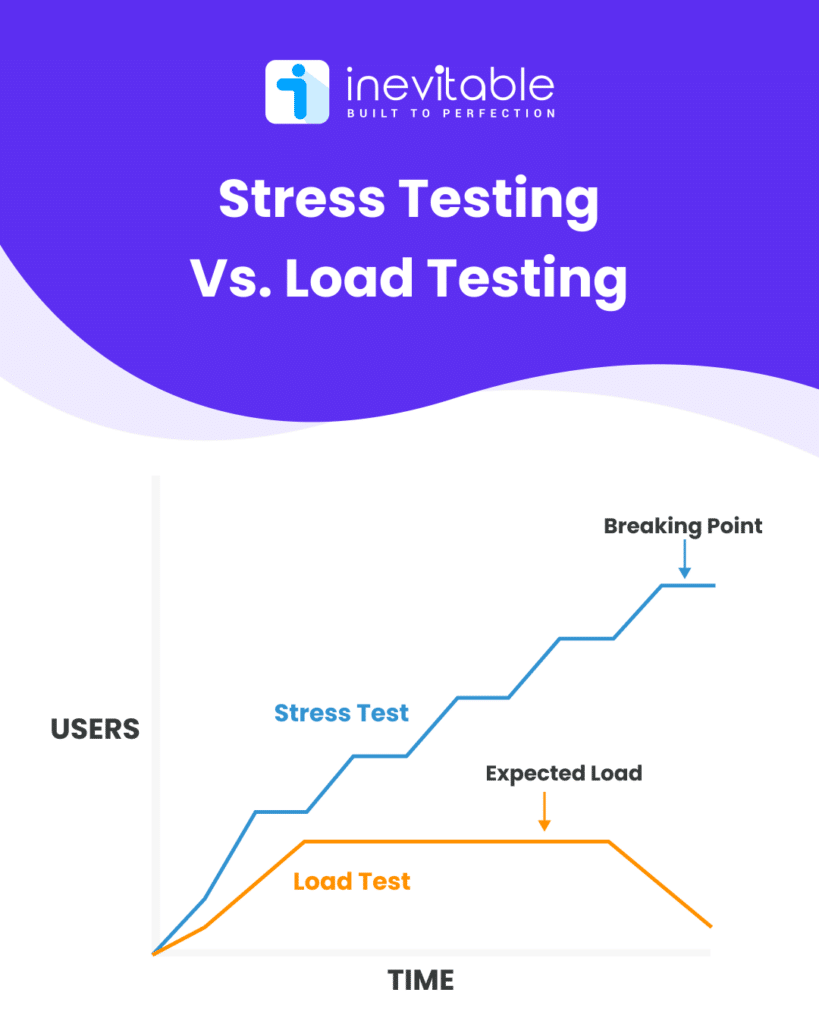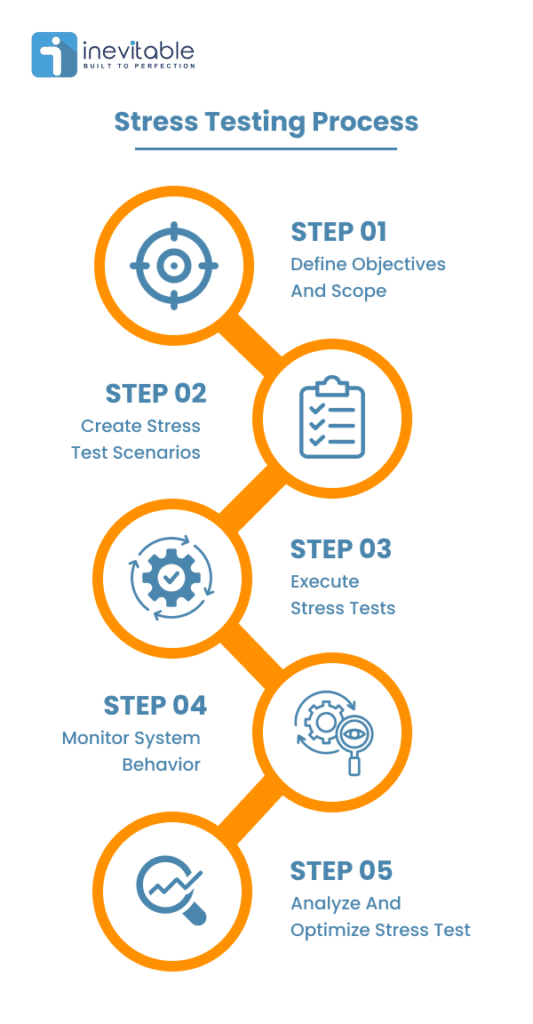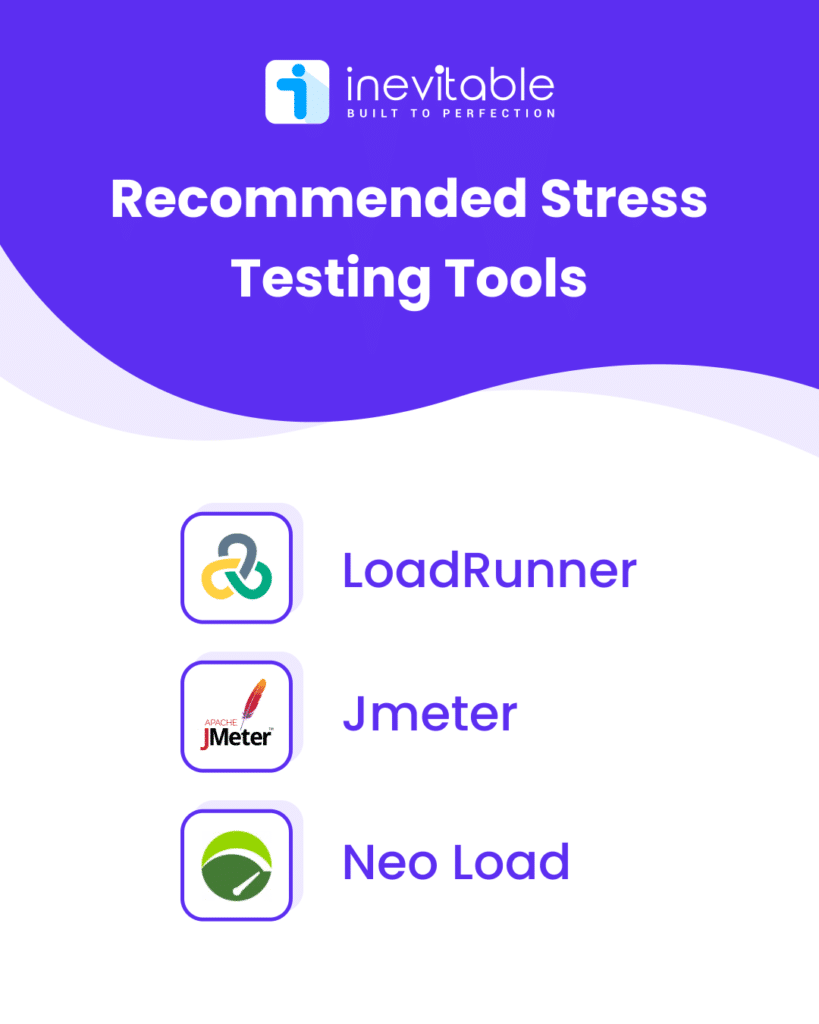
Introduction To Stress Testing
Stress testing is a type of performance testing that’s generally performed to check a website’s server’s response and how good the website experience is to the users. It is a standard procedure to see how well your website performs under stressful conditions. The systems are generally pushed beyond the normal limits for stress testing in software testing.
In this article, you will get insights on how stress testing is important in web development and app development, as well as how it’s different from load testing. The process of application stress testing, recommended stress testing tools, and types of stress testing along with the importance of stress testing are discussed here comprehensively.
Definition
Even though stress testing in software testing is a non-functional type of performance testing, it evaluates the performance of an application and its stability under extreme workloads. Stress testing confirms if an application is ready to roll out or not and measures the threshold of its capacity.
Importance of Stress Testing
The importance of stress testing is to find out the system benchmarks and limitations. From the stress testing results. Developers can uncover software bugs, understand crucial performance benchmarks, and test infrastructure dependencies. Application stress testing helps developers reduce the risk of failures, outages, and slowdowns of the system. Another importance of stress testing is determining if the service deterioration techniques like load balancing and prioritizing work are performing correctly with a congested volume of users.
Understanding Stress Testing
Understanding what is stress testing in software testing in and out and how to do stress testing is an important aspect of an application developer. It helps them evaluate the changes that are required and provide safe data before the final rollout.
Objectives and Characteristics
The main reason behind performing stress testing is to see the response of the system under abnormal conditions. Pushing the system’s capacity gives the measurement of the maximum capabilities of the system and quantifies the performance. Here are a few characteristics of stress testing in software testing.
- Subjecting System to Extreme Workload: It subjects the application to higher transaction volumes, data load concurrences, etc. than its normal capacity.
- Repetitive Intense Load: Stress overload is induced at regular time intervals over extended periods to stimulate worst-case scenarios for the system.
- Gradual Scaling Up: With stress testing the load capacity of a system is determined and with incremental growth of stress, the capacity of upper handling of the system increases.
Stress Testing vs. Load Testing
Now you may wonder, is stress testing the same as load testing? No, load testing is done with the known highest capacity of the system but stress testing in software testing is performed with overload beyond the highest known capacity.

The main differences between load and stress testing are:
| Stress Testing | Load Testing |
| It pushes the system behavior beyond the expected load until failure. | Evaluating performance under expected production workloads |
| In stress testing, intensive load is given on critical resources at regular intervals. | With load testing in software testing, a gradual incremental load is given. |
| For stress testing success is defined as when the system withstands heavy contention without failure. | Load testing, on the contrary, is considered successful when it meets benchmarks at required loads. |
| For stress testing specialized tools, and test environments are required. | Production-sized tools are enough for load testing. |
| The benchmarks that are measured are breaking points, tolerance thresholds, and performance range. | The metrics that are calculated are response time, at target loads. |
Types of Stress Testing in Software Testing
There are mainly five types of stress testing that are performed during software testing. The main types required to determine load thresholds are:
1. Distributed Stress Testing
The distributed stress testing is performed by distributing the traffic to different geographical locations. On several different computers, critical tasks are performed across distributed locations, to determine the performances at different places for shared resources in client-server applications.
2. Application Stress Testing
Application stress testing is focused on intensive workloads on specific applications and critical components. It involves producing an intense load on systems like login systems, payment gateways, and multimedia access, It helps in determining the weak points, and potential risk points in a multiple-user environment.
3. Transactional Stress Testing
In transactional stress testing, the system is bombarded with large spikes of performance activities like data input, API calls, and checkout systems at critical nodes. In this type of application stress testing, production-sized databases, and integration points are used.
4. Systemic Stress Testing
For testing the systemic stress of an application, heavy demands are inflicted upon, multiple system resources kike databases, disk I/O, memory, and interconnects. This is performed in an integrated environment to understand the scopes of scalability and identify binding constraints.
5. Exploratory Stress Testing
The main objective of exploratory stress testing is to assess the overall stability of the system. In exploratory stress testing, unusual parameters are used to stimulate unlikely scenarios to happen in reality, and unexpected workload spikes are induced.
Stress Testing Process You Should Follow
Executing stress testing requires rigorous planning as it places exceptional demands on the systems, and procedures to get trackable insights. The pivotal aspects of stress testing are well-defined stress-induced workflow, and balancing the intensity of stress as well as controlling the environment. Here is the step-by-step process for doing stress testing in software testing.

Step 1: Define Objectives and Scope
The objective of stress testing is to identify weaknesses and improve system reliability, and performance. For a particular web server or application, identifying the most crucial performances, to mimic overload in real life is the first step of stress testing.,
Step 2: Create Stress Test Scenarios
Based on the available data designing the pathway and main stress points is the most exhaustive step of stress testing. It involves creating situations with high-demand stimulations, such as peak user loads or data input rates with the inclusion of different confounding variables.
Step 3: Execute Stress Tests
As the next step in the process, we have to plant the test environment successfully. Once that step is done, the tester must assemble the necessary tools and resources to perform each approach specific to the features and components of the software to identify its functionality.
Step 4: Monitor System Behavior
Continuous monitoring of key performance indicators and recording system responses under stress help identify bottlenecks and register metrics for creating benchmarks. This is the crucial point to get the metrics upon which load testing can be performed later on.
Step 5: Analyze and Optimize Stress Test
The last step is to analyze the results of stress test results against benchmarks. This allows for the identification of points of weakness. After that, Implementing optimizations and adjustments becomes easier. Lastly, this is followed by re-running tests and validating improvements in system performance.
Our Recommended Stress Testing Tools

1. LoadRunner :
This tool is released by OpenText, and it is used to test applications in-depth to understand system capacity. This is a perfect tester tool and a good investment for bottleneck detection, root cause analysis, as well as more advanced testing features.
2. Jmeter:
Another popular open-source testing tool made with Java and mainly developed for functional testing including stress testing. It also involves. This tool provides you with templates for designing the testing, planning the testing courses, and parameters, and providing real-time results. It also has functions that can populate fields of any size of sampler, making it a worthy stress testing tool.
3. Neo load:
Neo Load is one of the most efficient stress testing tools out in the market for web and mobile software applications. It doesn’t require code to run the stress test and can be integrated with different systems. It is a unique and efficient testing tool for APIs, microservices, and end-to-end application testing.
Key Metrics of Stress Testing To Look For
The main things that you need to look out for are different performance metrics to determine latency, throughput, response timing, and utilization of resources. The results of stress testing are determined by these three key measuring metrics.
A. Measuring Scalability and Performance:
With a stress test running, the threshold for the load can help the developers determine the scalability. It also helps detect weak points which can be improved to improve performance. The deviation of the performance during stress testing helps in accurately pinpointing the benchmarks for crucial entry points and gateways.
B. Application Response
The response timing and performance are other crucial metrics that are checked during application response. The response data per second i.e. throughput, the loading of the number of pages requested per second, and the number of times or rounds the system responded well is calculated to determine the application response behavior.
C. Failures
Sometimes the tester pushes software to the brink of failure on purpose to assess the workability of the performance reserves. With repetitive and intense loads on crucial performance points is executed to push the software to failure.
Benefits and Limitations
Benefits of Stress Testing
The main benefits of stress testing in software testing are mitigating risks and enhancing the security of the system. It helps identify vulnerabilities of software and networks and prepare for peak loads as well as to plan out disaster recovery for peak load scenarios Performing stress testing before launch, also helps save a lot of money down the line in cases of server failure due to heavy load.
Limitations of Stress Testing
Even though performing stress-induced testing is always advised for large databases or multi-user systems, there are a few limitations of stress testing. The main limitations are the static nature of the stress testing and, the risk of over-optimizing the system. And, the main challenges that are faced during stress testing are difficulty in replicating user behavior, neglecting interaction effects, and the inability to cover all the failure points at times.
Conclusion
Despite the constrictions, stress testing is a valuable tool for detecting weaknesses and improvement points. Stress testing is often used in conjunction with other methods of performance testing. Using the right stress testing tools helps you perfectly identify all the binding points and challenges to overcome before rolling out an application. If you want your application to be safe and save money on failure management later on, check out the Inevitable Infotech’s portfolio and contact us to safeguard your application with stress testing now.
FAQs
What is stress testing in software testing?
In the realm of software testing, stress testing serves the purpose of assessing how well an application performs and remains stable when subjected to exceptionally high workloads. It helps in the verification of the readiness of an application for deployment and determines the benchmark at which the system reaches its limit.
Why is stress testing important in software testing?
Stress testing is important to determine the readiness of any application as well as to provide a comprehensive assessment of the system.
What are the main types of stress tests?
The main types of stress tests are defined depending on the pathways of the stress-induced. Types of stress tests generally performed are distributed stress testing, application stress testing, transactional stress testing, systemic stress testing, and exploratory stress testing.
What is an example of stress testing?
An example of stress testing is subjecting a web server to a surge of users in a very short duration or, subjecting a payment gateway in an application to 100 times transactions simultaneously.
Which tool is used for stress testing?
Specialized testing tools are used for stress testing to induce the environment for stress testing. The top recommendations for stress testing are Jmeter, Stress Tester, Neo Load, and LoadRunner.


